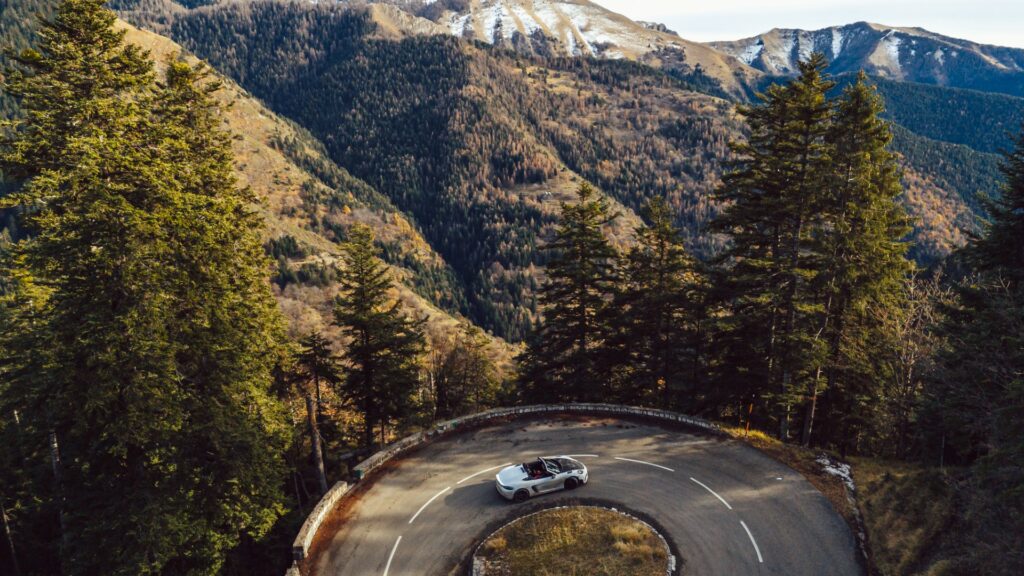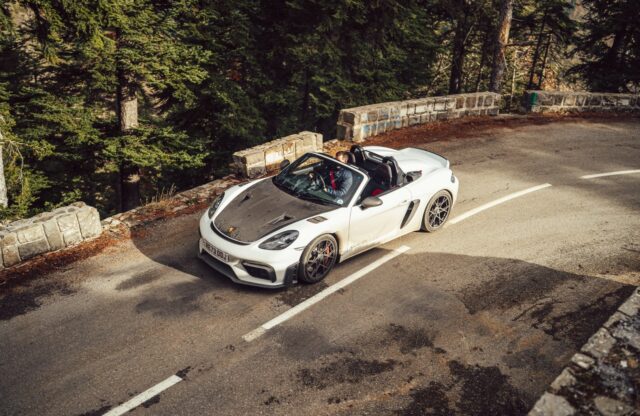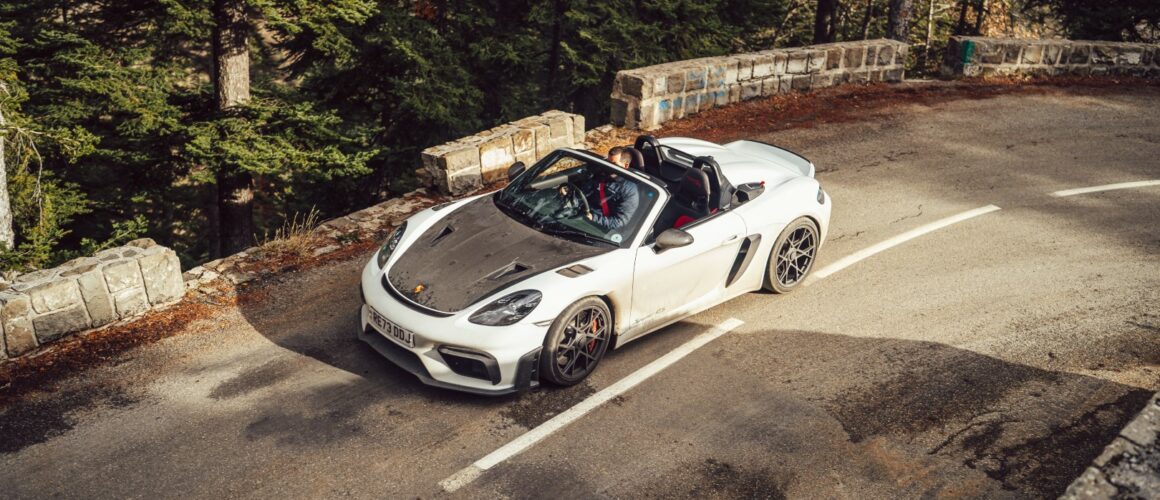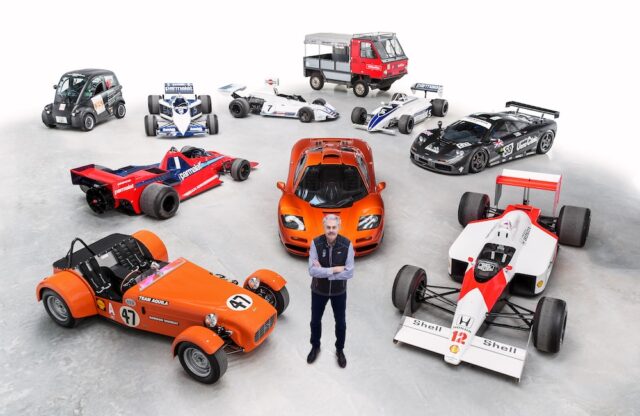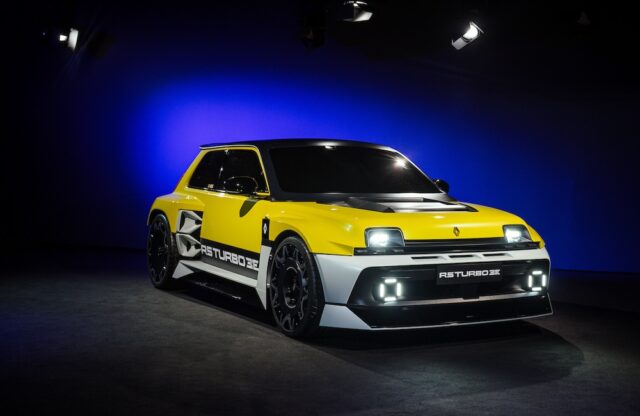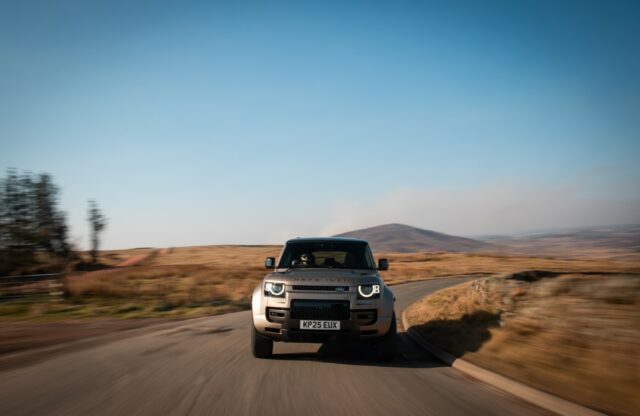WORDS: ALEX GOY | PHOTOS: PORSCHE
We should be hugely relieved that Porsche’s RS bods have turned their eye to the firm’s smaller cars. The likes of the 911 GT3 and GT3 RS are wonderful things, but the 718 Cayman and Boxster have always been the kind of machinery that we knew could take a heap more grunt. Perhaps Porsche was holding back for fear of embarrassing the sainted 911? As the ICE Boxster looks the grim reaper in the eye hole, it’s been given the full RS treatment in the 718 Spyder RS – and what a simply glorious way to go.
The Boxster Spyder has long been a highlight of the line-up: more power, more drama, more everything (less roof, mind). But the Spyder RS? That’s a whole different ballgame. Unlike its hard-top sibling, the 718 Cayman GT4 RS, it’s not quite as track-focused as its name suggests – it has a less dramatic front splitter than the Cayman, a pleasing ducktail at the back rather than a 747 wing, softer suspension… and no downforce-tastic underbody vanes, either. This isn’t for laptimes, it’s for fun – so why on earth would you want all that stuff on board?

What I wasn’t expecting was to be partially deafened by the induction vent right next to my ear
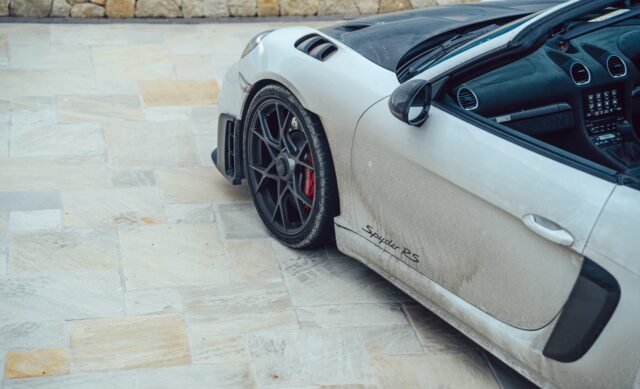
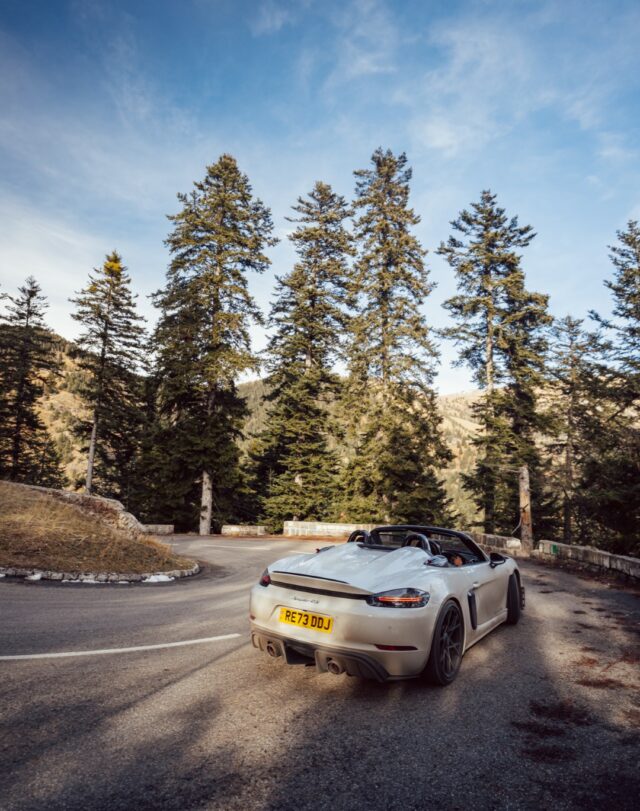
With less trickery and no roof, the Spyder RS weighs in at a rather respectable 1410kg (about the same as the lightest Lotus Emira). Part of its featherweight is also down to liberal use of Carbon Fibre Reinforced Plastic panels and seats, and you can lose more chunk by speccing the Weissach Package, which will give you 10kg back thanks to magnesium wheels.
Its motor is that 4.0-litre naturally aspirated flat-six, kicking out 493bhp and 332lb ft, which is more than adequate. Plant your foot and you’ll hit 62mph from rest in 3.4 seconds, and clip 191mph if you’re truly committed. The power gets to the rear wheels via a seven-speed PDK only, which is probably for the best, because with that much grunt on board you might be a little busy switching gears on your own.
Although this generation of Boxster is a little long in the tooth, it still looks good. OK, with a heap of jazzy carbon bits, a ducktail, massive intake vents and centrelock alloys, it certainly appears purposeful, but you’d hardly accuse it of looking outdated with or without. Its interior is sleek and unfussy, and uses an old version of Porsche’s infotainment set-up. That means you get real buttons to do things, plus easy-to-use CarPlay. For a modern car it’s remarkably simple, and is all the better for it.

Now, you’d expect a car on RS-spec (albeit softly tuned) springs with carbon buckets to be something of a nightmare about town. It isn’t. In fact, going in assuming it’d leave me in an utter mess meant I was left relieved that it was compliant over speed humps and potholes. What I wasn’t expecting was to be partially deafened by the induction vent right next to my ear. There’s 4.0 litres of flat-six slap bang in the middle of the car, and it needs air to not go bang. To make sure it gets said air, there are a couple of intakes just behind each seat. When you give the motor a purposeful tickle, they fire out an almighty noise – it’s not unpleasant, but it won’t become a go-to for a zen sound bath, either.
The Spyder RS has size on its side. Where the 911 seems rather large these days, the Boxster is still a (relatively) small thing. You don’t feel the need to inhale as you go down side streets, and, thanks to its width, parallel parking isn’t an issue, either.

Of course, while you’re busily firing induction noises around town (as well as flat-six growls) you WILL be seen. The Spyder RS comes with a tentish roof that’ll keep the elements out, but to use it isn’t exactly in the spirit of things. After pedestrians hear you coming, they’ll see you, likely beaming, and will be able to have a chat if they want to. Shy people need not apply… or maybe they can if they just hoof it out of town.
In fact, to keep one of these confined to the city would be sacrilege. It’s not a track monster, but it is a corner carver. Find your own perfect country road/set of switchbacks/version of the Stelvio Pass/industrial estate, and you’ll probably be in heaven.
First you notice the noise. The familiar N/A Porsche howl sounds just incredible flying from the middle of the car, just behind your ears. Press on, and you’re treated to that induction noise, then more howl, and a general cacophony of wonderfulness the likes of which will probably never be heard again. At least not from a mainstream manufacturer.

Throttle response is as direct as you like, revs rise deliciously quickly as you chase howl after howl. The Spyder RS’s seven-speed PDK will happily punt you from ratio to ratio if you let it, but to have the most fun you’re best off playing with its beautifully tactile paddles – a simple, chunky click and you’re away. It reacts near-as-damnit instantly, and never fails to make you smile. The brakes, as you’d expect, do their job brilliantly.
All that is secondary to the Spyder RS’s steering. It’s wonderfully weighted, direct and gives so much feedback you may well find yourself doubting whether any other car you drive will be able to get even close to it.

Combine the lot, and you cannot fail to have fun on challenging roads. You can deftly thread it through each apex, lean on the gas to experience noise, brake neatly, and repeat. You can easily find the car’s flow, and simply float around, teeth flashing at any passing wildlife. The fact its suspension doesn’t punish you adds to its joyousness.
This is an end point for the battery-less Boxster. It’s based on what many would consider ‘old’ architecture, uses older interior tech, and isn’t as hardcore as people who rarely drive hard-sprung cars would probably think it should be. Soft (er than you’d expect), old school, noisy and fun. What a way to go.
